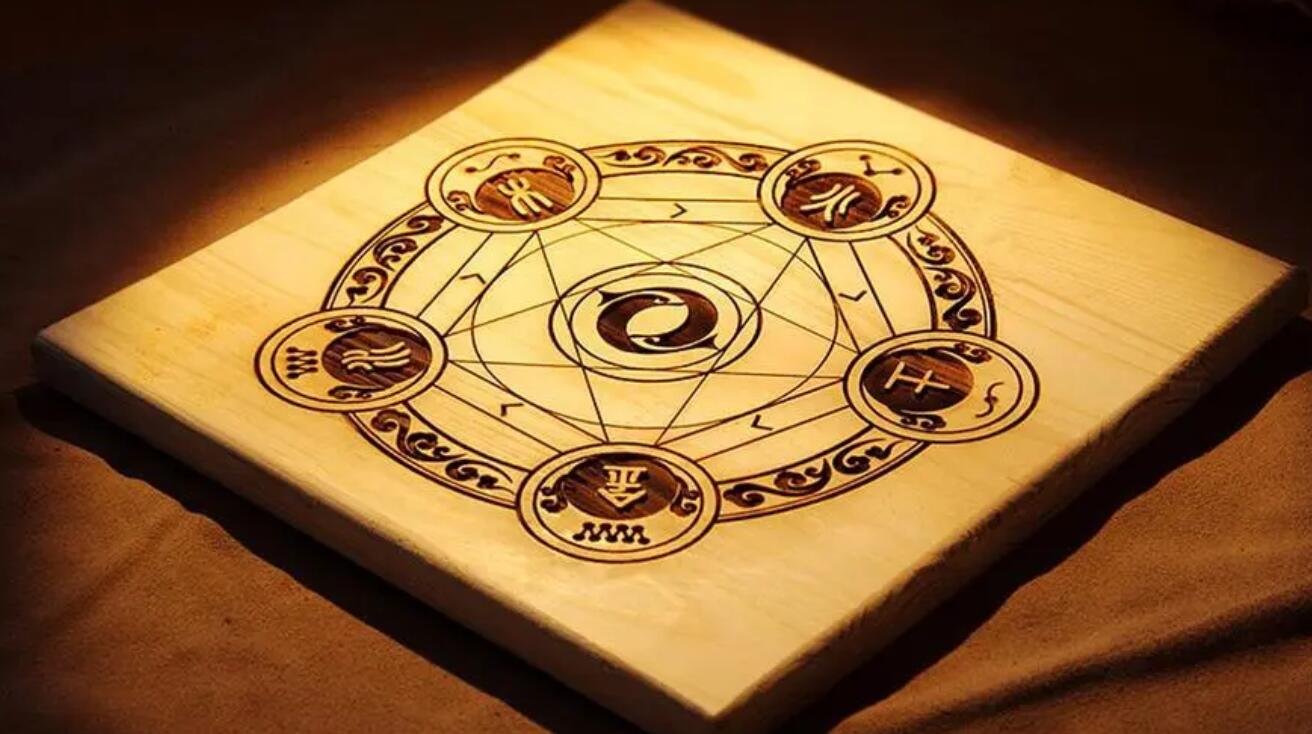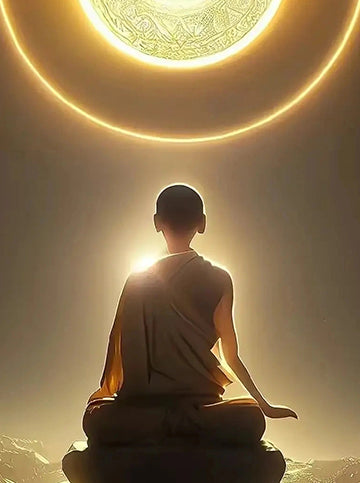The Chinese recognize five elements.These arise out of the interplay of yin and yang and represent different manifestations of Qi. They represent a classification system for everything in the universe, including people. The Chinese believe everything is in a constant state of change, moving among the five elements or forces of nature - these are called wu - xing (woo - shing).
These five elements are another key to manipulating Qi in the home. They are Water or Shui (Shwee), Wood or Mu (Moo), Fire or Huo (Hor), Earth or T'u (Too), Metal or Jin (Chin). The Chinese elements are thought of as changing energies, each with five different sets of qualities.
Ideally, there should be a balance of all the elements. Where one dominates or is lacking, difficulties occur. Interpreting and balancing the elements plays a major role in the practice of Feng Shui. They also constitute an easy way of identifying the correct elements of a Feng Shui makeover, where the most important associations are, and how the five elements relate to the eight compass directions.
The production/destruction cycle.
The elements move and relate to each other in a productive/destructive manner. This forms a cycle, which can be productive and creative, or potentially destructive and negative. Consider the cycle in the following manner: Water enables Wood to grow, Wood enables Fire to burn, resulting in ashes on Earth, in which forms Metal, which in liquid form resembles Water. Or another cycle: Water extinguishes Fire, and in turn is soaked up by the Earth, which is depleted of energy by Wood in the form of trees, which can be destroyed by Metal tools. We must also remember that in supporting another element, an element can itself be weakened.
Fire
SYMBOLIZES: Fire, heat, summer.
DIRECTION: South.
POSITIVES: Warmth, happiness, light. Positive Fire characteristics include innovation, passion, action and humor.
NEGATIVES: Fire can erupt, explode and destroy. It can evoke impatience, anger or inconsiderate actions.
ASSOCIATIONS: Symbols of the sun. Candles, lights and lamps. All manufactured materials. Triangular or pyramid shapes. Geometric patterns.
Warm red tones. Plants with pointed leaves. A skylight or fireplace.
THE PRODUCTION/DESTRUCTION CYCLE: Fire is helped by Wood, harmed by Water, weakened by Earth. Fire weakens Metal.
Wood
SYMBOLIZES: Growth, renewal, plant life. Wood energy is nurturing, versatile and expansive.
DIRECTION: East/Southeast.
POSITIVES: It can be as supple and pliable as bamboo or as sturdy as oak. Positive Wood characteristics include visualization, artistic talent, enthusiasm, public-mindedness.
NEGATIVES: Wood can be used as a spear. Negative Wood characteristics include impatience, anger, an inability to complete tasks.
ASSOCIATIONS: Trees, plants, flowers. Wooden furniture or decorative objects made from wood. Paper, columns, decking. The color green. Artwork depicting landscapes. Tall plants, vertically striped blinds or up lights.
THE PRODUCTION/DESTRUCTION CYCLE: Wood is helped by Water, harmed by Metal, weakened by Fire. Wood weakens Earth.
Earth
SYMBOLIZES: Nurturing environment which enables seeds to grow. Earth supports, nurtures and interacts with each of the other elements.
DIRECTION: Center/Southwest/Northeast.
POSITIVES: Earth denotes fairness, wisdom, instinct. Positive characteristics include loyalty, patience and practicality.
NEGATIVES: Earth can smother. Negative Earth characteristics obsession and nit-picking.
ASSOCIATIONS: Clay, brick, terracotta. Ochre. Cement and stone. Squares. Yellow, brown, orange. Ceramic bowls, porcelain jars, pots, furnishings in earth tones. Low, wide, and cube-shaped objects such as coffee tables or ottomans. Low, spreading plants.
THE PRODUCTION/DESTRUCTION CYCLE: Earth is helped by Fire, harmed by Wood, weakened by Metal. Earth weakens Water.
Metal
SYMBOLIZES: Autumn. Strength. It represents solidity and an ability to "contain" objects. Metal is also a conductor.
DIRECTION: West/Northwest.
POSITIVES: Communication, brilliant ideas, justice. Positive Metal characteristics include independence and intuition.
NEGATIVES: Destruction, danger, sadness. Can be the blade of a weapon. Can evoke inflexibility, seriousness, melancholy.
ASSOCIATIONS: All metals. Metal objects. Kitchenware. Coins. Clocks. The colors white, gray, silver and gold. Domes. Round shapes. Candlesticks, plates, photo frames, polished hard stone surfaces, including marble or granite.
THE PRODUCTION/DESTRUCTION CYCLE: Metal is helped by Earth, harmed by Fire, weakened by Water. Metal weakens Wood.
Water
SYMBOLIZES: Winter and water. The inner self, art, beauty.
DIRECTION: North.
POSITIVES: It nurtures and supports with understanding. Positive Water characteristics include diplomacy, sociability, sympathy, artistry.
NEGATIVES: Water can wear down and exhaust. It can suggest fear, nervousness, and stress. Negative Water characteristics include over sensitivity and fickleness.
ASSOCIATIONS: Rivers, streams, lakes. Water features. Reflective materials, including mirrors and glass. Fish tanks. Artwork depicting water. The colors blue and black. A decorative blue lantern or sculpture, blue sofa, black shelving, a textured glass bowl, creeping plants.
THE PRODUCTION/DESTRUCTION CYCLE: Water is helped by Metal, harmed by Earth, weakened by Wood. Water weakens Fire.
The five elements - Water, Wood, Fire, Earth, Metal - are represented by symbolic association in the home and are a key Feng Shui principle used for manipulating Qi. The Fire element in the home is symbolized by candles, lights and lamps. Aquariums, ponds, water features symbolize Water. Bricks and terracotta symbolize the Earth element. Wooden furniture and decking are symbolic of Wood. Kitchenware, clocks and plates symbolize Metal.
By understanding how each energy is represented in your home, you can easily change the feel of your environment. For example, once you know that Fire energy is active and energizing, you can apply its symbols where appropriate - a glowing fireplace in the living room or a candlelit dinner for two will promote good Feng Shui.
The Bagua, or Pa Kua is perhaps the most important reference symbol in the practice of Feng Shui. This octagonal symbol corresponds to the four cardinal points of the compass and its four sub-directions. The four cardinal compass points are North (N), South (S). East (E) and West (W). Between them are inter-cardinal points: Northwest (NW), Northeast (NE), Southwest (SW) and Southeast (SE). Each direction corresponds to one of the eight trigrams of Chinese metaphysics, derived from the ancient text the I Ching.
The Elements move in a predetermined way, in a cycle where they all support each other. Consider the cycle in the following manner: Water enables Wood to grow, Wood enables Fire to burn, resulting in ashes on Earth, in which forms Metal, which in liquid form resembles Water. It is important to remember that in supporting another element, an element itself can be weakened.

